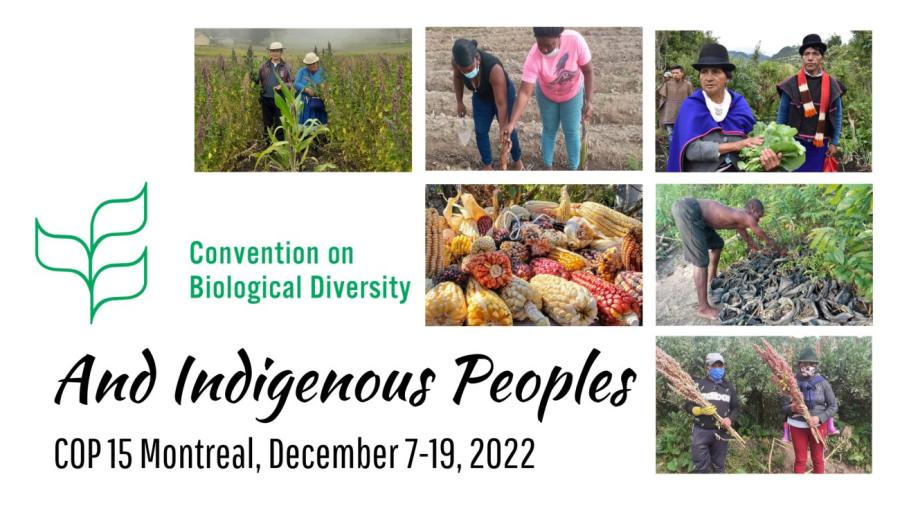In not so distant times many national legal systems classified children along with married women and lunatics as being legally incompetent and thus not entitled to exercise a wide range of rights on their own behalf. Worse still was the fact that, whereas married women and lunatics were considered to be entitled to special measures of protection, children were not. Instead, the earliest legislation such as the Roman patria potestas doctrine treated the child as parental, and usually paternal, property.
Since the early 10th century such assumptions have gradually been abandoned and childhood has come to be recognized as a special status warranting the adoption of special measures of protection.
In recent years the children's rights movement has gathered considerable strength and the adoption of international legal standards has been viewed by many as a particularly useful means to entrench in national law the notion that children have rights. In general those rights overlap significantly with all human rights, but they also extend to a variety of special measures to which children are entitled by virtue of their special vulnerability.
The first efforts at the international level were undertaken by the League of Nations, which established a special committee to deal with questions relating to the protection of children and adopted conventions prohibiting the traffic in women and children (1921) and slavery (1926)., The Geneva Declaration of the Rights of the Child, adopted in 1924 by the Assembly of the League, was not cast in terms of state obligation but of duties declared and accepted by "men and women of all nations" and according to which "the child must be given the means requisite for its normal development, both materially and spiritually."
Subsequently, the Universal Declaration of Human Rights of 1948 proclaimed a basic catalog of internationally recognized human rights, most of which were equally applicable to children and adults. But only two of its provisions are specifically concerned with children - article 25 (2), which recognizes that "motherhood and childhood are entitled to special care and assistance," and article 26, dealing with the right to education."
However, the most important policy statement in this field adopted by the General Assembly is the 1959 Declaration of the Rights of the Child. Stressing that "mankind owes to the child the best it has to give," the Declaration's 10 principles affirm the right of the child to receive special protection, to be given opportunities and facilities to enable him to develop in a healthy and normal manner, to enjoy the benefits of social security, including adequate nutrition, housing, recreation and medical services, to receive education and to be protected against all forms of neglect, cruelty and exploitation. Most of these rights were subsequently reaffirmed in treaty form in the International Covenant on Economic, Social and Cultural Rights adopted in 1966.
In addition to those already mentioned, a wide range of other international instruments contain provisions for the protection of children in particular situations.
Definition of a "Child"
The problem of defining both the lower and upper age limits for a "child" has by no means been resolved by the relevant international legal instruments. At the lower limit the question of the rights of the unborn child remains controversial despite the fact that relatively few instruments provide, as does the American Convention on Human Rights, that the right to life must be protected by law and, in general, from the time of conception.
The upper limit varies both according to the legal document and to the activity concerned. Thus, for example, the Supplementary Convention on Slavery of 1956 (article 1 (d) specifies the age of 18, whereas the 1962 Convention on Consent to Marriage, Minimum Age for Marriage and Registration of Marriages leaves it open for states to specify a minimum age for marriage. In the case of child work the International Labour Organization Minimum Age Convention, 1973 (No. 138), does not set a single minimum age for admission to employment but rather distinguishes between underdeveloped countries which may initially 3 set a limit of 14, and others where the limit must be at least 15. The minimum age for dangerous work is generally 18.
In efforts currently being undertaken by the UN Commission on Human Rights to draft an ambitious and comprehensive children's rights treaty (the Convention on the Rights of the Child), the current draft provides that "a child is every human being to the age of 18 years, unless under the age of his State, he has attained his majority earlier. "The draft thus endeavors to attain uniformity while at the same time accommodating the existing diversity of national age limits. It nevertheless remains open to the criticism, which may be leveled against most existing rulings, that insufficient recognition is given to the different needs of children of different age groups such as pre-school and school-age children and adolescents.
Protection for Children in Special Situations
Children in Armed Conflicts
Under the terms of the four Geneva Conventions of 1949, children are protected in the same way as are "all persons taking no active part in the hostilities." The Fourth Geneva Convention provides that, during both international and non-international armed conflicts, all civilians, children being thereby included, are entitled to humane treatment. Nevertheless, none of the four Conventions specifically refers to the need to provide special protection for children. This omission was remedied in the two 1977 Protocols Additional to the Geneva Convention. The 1974 General Assembly Declaration on the Protection of Women and Children in Emergency and Armed Conflict is also important in this context.
Refugee Children
None of the existing United Nations instruments on the rights of refugees makes specific reference to the status of children who are themselves refugees or whose parents are refugees. Nevertheless, the practice followed by the United Nations High Commissioner for Refugees has been to treat each case on its merits so that age per se is not a determining factor in deciding refugee status. Article 11 of the draft Convention requires states parties to ensure that both accompanied and unaccompanied children receive appropriate protection and humanitarian assistance.
Disabled Children
Although the General Assembly has adopted Declarations respectively on the Rights of Mentally Retarded Persons (1971) and the Rights of Disabled Persons (1975), neither instrument contains any specific provision dealing with children. The preamble of each does, however, recall the Declaration on the Rights of the Child, principle 5 of which requires that the physically, mentally or socially handicapped child be given "the special treatment, education and care required by his particular condition." Article 12 of the draft Convention contains detailed provisions on the rights of mentally or physically disabled children.
Illegitimate Children
Although many national legal systems have traditionally accorded an inferior status to illegitimate children, these distinctions have been firmly rejected by international human rights law. Thus article 2 of the Universal Declaration of Human Rights provides that "all children, whether they are born in or out of wedlock, shall enjoy the same social protection." This approach has subsequently been endorsed in the Declaration on the Rights of the Child, the International Human Rights Covenants and a 1975 Council of Europe Convention.
Abducted Children
For a variety of reasons, the number of cases in which a child is seized by a parent or other relative and removed to another country has grown enormously in recent years. The important of the problem was underlined by the Economic and Social Council in resolution 1982/39. In 1980 the Hague Conference on Private International Law adopted a Convention on the Civil Aspects of International Child Abduction, which is open to ratification by all states. A comparable regional convention was also adopted by the Council of Europe in 1980. The increased international cooperation based upon these formal agreements has aided in the identification and return of abducted children.
Fostered or Adopted Children
The veritable explosion of interest in international adoption of children which took place in the 1960s and 1970s brought with it a range of objectionable practices underscored the need for coordinated international action. Relevant Conventions were adopted by the Hague Conference in 1965 and the Council of Europe in 1967. In 1978 a United Nations-convened expert group adopted a "draft declaration on social and legal principles relating to the protection and welfare of children, with special reference to foster placement and adoption nationally and internationally." The draft remains on the agenda of the General Assembly. Articles 10 and 11 of the draft Convention on the Rights of the Child also deal with these issues.
Exploited Children
The ILO estimates that there are 52 million child workers (below the age of 15) in the world. Other estimates put the total at three times that number. While not all child labor is exploitive, much of it clearly is. Among the most common forms of child labor are: agricultural and handicraft work within the family, handicraft piecework, seasonal agricultural labor, apprenticeships, work in sweat shops, maid work, bonded labor (connected to long-term unpaid debts), prostitution and other forms of sexual exploitation. In order to combat such exploitation the ILO has adopted a range of legal instruments, the most comprehensive of which is the Minimum Age Convention, 1973 (No. 138).
Other exploitive practices have been dealt with by the Sub-Commission on Prevention of Discrimination and Protection of Minorities in the context of studies on child labor (1982) and contemporary forms of slavery (1984).
Evaluation
The foregoing list of special situations is by no means comprehensive but gives an indication of the proliferation of international legal standards for the protection of children. It also reveals the extent to which they are scattered among rulings, in the context of which they are often of only marginal importance. The case for a comprehensive new Convention is thus a strong one. The articles on which consensus has been achieved as of 1985 indicate that an effort is being made in the draft Convention to respond to some of the criticisms that have been directed at existing standards. For example, greater emphasis has been placed on the child's right to information and to participate in decision making. The responsibilities, rather than just the rights, of parents are recognized and the central consideration is the "best interests of the child." The draft also gives greater recognition to the "evolving capacities of the child" than have previous instruments.
The general nondiscrimination clause in article 4 is unusually broad and introduces the notion that a child should not be discriminated against on the basis of the status, activities or views of his parents or guardians. The provisions relating to economic and social rights are comprehensive but the corresponding state obligations remain vague and in some instances, as with the right to primary education, the obligation is weaker than that in existing instruments.
In general terms it may be questioned whether the draft is unduly geared to the situation in affluent industrialized countries rather than in developing countries. Regional instruments which already contain relevant provisions include the European Social Charter (article 17), the American Convention on Human Rights (article 19), the Inter-American Declaration on Family Rights (1983) and the African Charter of Human and Peoples' Rights.
The drafting of the UN's new Convention is not likely to be completed before the end of 1988 and no consensus has yet emerged as to the means by which states parties' compliance with their Convention obligations will be supervised by the international community. In the meantime, some of the most encouraging development in this area are the emphasis which UNICEF has come to attach to the concept of children's rights in general and the very active role which it has, after considerable initial reluctance, begun to play in the drafting of the new UN Convention.
Article copyright Cultural Survival, Inc.



